De Gulden Passer. Jaargang 68
(1990)– [tijdschrift] Gulden Passer, De–
[pagina 119]
| |||||||||||||||||
The ‘Louvain Irish’ printing type
| |||||||||||||||||
[pagina 120]
| |||||||||||||||||
April 3rd 1607Ga naar voetnoot2. Conry had prepared a catechism in Irish as early as 1593 which was never printed. It was, perhaps, this work which inspired Bonaventure O'Hussey, one of the early Louvain Franciscans, to write his Irish catechism An Teagasg Criosdaidhe.Ga naar voetnoot3 O'Hussey was a native of the diocese of Clogher who had gained his Master of Arts from Douai, and was received into the Order of St. Francis at Louvain on 1st November 1607. He died as guardian of the College on 15th November 1614.Ga naar voetnoot4 It was for the printing of this catechism in 1611 that the first truely Irish type was prepared. Franciscan authorities generally accept that the type was modelled on the handwriting style of O'Hussey himself. Indeed, examination of his writing as demonstrated in his letter to Robert NugentGa naar voetnoot5 (see figure 1) dated 19th September 1605, does reveal a number of features which are evident in the printing type: the capital letters A, N and R; the distinctive left stroke of the lower-case a; and the different angles of the r and s. While some of these characteristics were not uncommon in other contemporary hands, in a general sense there would appear to be some grounds for making the association between O'Hussey's writing and the ‘Louvain Irish’ type. This influence prompted E.W. Lynam to observe that the type was the first legitimate printed letter designed for Irish scholars from Irish manuscripts probably by an Antwerp man who may have taken italic type as a guide.Ga naar voetnoot6 The type was used for the first time to print An Teagasg Criosdaidhe at Antwerp ‘apud Jacobum Mesium’ (see figure 2). The approbation on the verso of the title-page is dated 20 June 1611. Regarding this date, P.J. Madden notes that O'Kearney's Reformed Church | |||||||||||||||||
[pagina 121]
| |||||||||||||||||
catechism, to which he suggests O'Hussey's had been a counterblow, was dated 20 June 1571.Ga naar voetnoot7 There has been some confusion among scholars of the subject regarding the date of first publication of O'Hussey's catechism: Luke Wadding was first to mention a 1608 edition in his Scriptores Ordinis Minorum,Ga naar voetnoot8 where he states it was printed in Irish characters at that time in the college of the Irish Franciscans at Louvain. Since the college press had not been established until 1611, this assertion would seem to have been in error. No firm evidence has been uncovered to suggest that there was a 1608 edition. On April 15, 1614, O'Hussey issued a petition to the Archduke Albert seeking permission to print Irish material at the college, he alerted Albert to the fact that the Reformed Protestant Church in Ireland had already issued a false translation of the bible and warned him that other religious works in the Irish language intented to convert the Irish from their Catholic faith, were ‘daily appearing’.Ga naar voetnoot9 In May 1614 permission to establish the press at the college was granted.Ga naar voetnoot10 However, according to Fr. Francis Matthews, the press with the Irish type had already been set up there as early as 1611.Ga naar voetnoot11 The authorities of the Protestant Church were clearly concerned about this development and in June 1614 William Trumbull, the British agent at Brussels, wrote to the Archduke Albert expressing their concern and requesting that he refuse the Franciscans the licence to print at the college.Ga naar voetnoot12 Later, on July 9, 1614, Sir Ralph Winwood wrote to Trumbull indicating that King James I had protested strongly to the Ambassador of the Archduke about the | |||||||||||||||||
[pagina 122]
| |||||||||||||||||
Franciscan printing press, and demanded that they not only be prohibited from printing in Irish but that all copies of their books already printed be collected and burnt.Ga naar voetnoot13 The Archduke refused to interfere. The King of Spain, perhaps unknowingly, was further connected with the Irish press at Louvain, for in the will of Fr. Robert Chamberlain, made on the eve of his profession on 7th February 1611, it is stated that he left what the king owed to him to the Irish publishing efforts of the Gaelic press at the college.Ga naar voetnoot14 It was perhaps because of his interest in the printing of such Irish material that Chamberlain was assigned to examine An Teagasg Criosdaidhe prior to its publication, which carried the approbation of the Archbishop of Malines on its last page, stating that the book had been read and approved by Hugh MacCaghwell and Robert Chamberlain.Ga naar voetnoot15 A later undated edition of O'Hussey's catechism was printed at the college press sometime between 1611 and 1619. Henry Bradshaw in his letter to Talbot Bains Reed suggests 1614 as the date, for he points out that the copy that he had bought in its original binding was given to the Franciscans at Toulouse in 1619, and since O'Hussey died in 1614 as guardian of the college and is referred to in this edition as ‘poor brother of the Order of St. Francis’, suggests a date prior to his becoming Guardian.Ga naar voetnoot16 With a possible reference to the Irish type, Thomas Walsh, Archbishop of Cashel, in a letter to Luke Wadding dated 1st September 1628, mentions Moretus of Antwerp in the context of the publishing of the works of Br. Patrick Fleming in the letters of Plantin.Ga naar voetnoot17 This letter, which according to Brendan Jennings, is badly frayed and difficult to decipher may suggest that there was a connection between the Plantin works and the printing efforts of the Irish Franciscans at Louvain. It is particu- | |||||||||||||||||
[pagina 123]
| |||||||||||||||||
larly interesting to note that there was an Irish typefounder working at the Plantin foundry during the period when the ‘Louvain Irish’ type was likely to have been produced. In his book The Golden Compasses Leon Voet refers to the Irishman Thomas Strong who supplied the Plantinian press with cast type until October 1624,Ga naar voetnoot18 and that Strong, an Irish type-founder worked for the Moretuses from 1600 to 1624 and worked in the Plantin house itself from 1620 to 1622 (see figure 3). From 1601 to 1608 his name appears regularly in the Plantin accounts and to a lesser extent up to 1614. It is interesting to note that, according to Voet, during this period under the Moretuses, fewer new sets of punches were ordered at the Plantin works, resulting in the necessity for the occasional cutting of punches by their staff type-founders to replace those lost or damaged. Hence, it would seem, that Thomas Strong would have had some experience of punch cutting. Further reference to Strong also appears in the City of Antwerp recordsGa naar voetnoot19 where it is entered that the letterfounder Thomas Strong had written a letter of recommendation dated 10th December 1598 for another Irishman, Thomas White of Dublin (see figure 4), while another recordGa naar voetnoot20 indicates that Thomas Strong, son of Jacob, from Ireland, letterfounder, was residing in Antwerp as of 1 July 1603. Thomas would appear to have had a son and daughter. His son Jacques was also employed at the Plantin works, initially from 1615 as an apprentice, and later, like his father, as a typefounder from 1624-26. After a time Jacques absconded, | |||||||||||||||||
[pagina 124]
| |||||||||||||||||
leaving a large debt unpaid.Ga naar voetnoot21 His daughter married Christian Calammus who, according to a testimonial by Balthasar Moretus dated 9 April 1620, was employed at the Plantin works to take care of the collection of type. In this letter Moretus refers to the father Thomas as being an honest man.Ga naar voetnoot22 It is assumed that Thomas died about 1624, leaving a wife Margaret Verham, since no further mention appears to have been made of him in the Plantin records after that date. There is also record of a Thomas Strong appearing among the Franciscans at the Irish College in Louvain (a mere 50 km from Antwerp) at this particular point in time, which fact would seem to provide us with either a remarkable set of coincidences, or with further information regarding the above mentioned Thomas Strong. Brendan Jennings indicates in the Louvain Papers that in June 1607 Brother Thomas Strong, subdeacon of the province of St. Jacob in Spain had come to the college.Ga naar voetnoot23 In 1622 the Irish College at Douai published the names of its past students, amongst them those who had become Franciscans.Ga naar voetnoot24 This list includes the name Thomas Strong. An examination of the University College Dublin copy of this rare book reveals the words ‘alias Nicholaus’ hand written in the margin opposite the name of Thomas Strong, which suggests, according to that source at least, that he may have used either first name. The Fourth Report of the Royal Commission on Historical Manuscripts shows that a Fr. Nicolaus Strong of Waterford was received into the College on 16 March 1614,Ga naar voetnoot25 while the Malines Ordination Registers 1602-1794 indicates that Nicolaus Strong O.F.M. received Tonsure and Minor Orders on 27 May 1616.Ga naar voetnoot26 | |||||||||||||||||
[pagina 125]
| |||||||||||||||||
There is a considerable amount of information concerning Friar Thomas Strong (sometimes called Strange) in Franciscan Manuscript records and in the Calendar of State Papers, Ireland. Earlier in his career he was actively involved as a courier of information for the Irish rebel forces and their supporters on the Continent. A particularly interesting account of him in 1608 is contained in the Calendar of State Papers, Ireland,Ga naar voetnoot27 which describes him as being short and stocky, about 40 years of age, with dark hair and a yellow skin complexion and mentions that he suffered from an eye condition. Strong was later appointed as guardian of the Order in DublinGa naar voetnoot28 and acted as collaborator for his cousin Luke Wadding in his Sacred History of Ireland. In this regard he had the cooperation of Primate Usher and had access to his library.Ga naar voetnoot29 Searches for information regarding the Franciscan Thomas Strong are confused by the presence of a Thomas Strong who was Bishop of Ossory between 1582 and 1602, and who spent much of this period in exile in Spain. He died at the age of 55 on 20 January 1602.Ga naar voetnoot30 Harry Carter implies that there was a connection between the typefounder Strong and Bishop Strong whom he incorrectly suggests was one and the same as the later Franciscan Strong. Carter's brief reference to Strong is contained in a paper published in De Gulden PasserGa naar voetnoot31 after a lecture given by him in which he is said to have added, in what may be taken as a despairing note, ‘The question I cannot answer, and that is the end of the Irishman as far as I am concerned’. It is interesting to speculate as to the possibility of Thomas Strong the typefounder, with experience at the Plantin works | |||||||||||||||||
[pagina 126]
| |||||||||||||||||
from 1601-8; joining the Franciscans at Louvain in 1607, being released from there to the Plantin works to help in the preparation of the Irish type from 1608-11, and to the possibility of his being involved in the establishment of the printing press at the college in 1611-14. However, despite the many coincidences, it remains that the name Thomas Strong was not uncommon at the time, and no firm evidence has been uncovered to link the typefounder with the Franciscan. The ‘Louvain Irish’ type was used to print a number of works which included an undated twelve page pamphlet of prayers, blessings and summaries of the Franciscan Rule, entitled Suim Riaghlachas Phroinsiais, the only known copy of which is in Marsh's Library, Dublin (see figure 5). Fr. Canice Mooney in his article on St. Anthony's College suggests 1614 as the date of printing.Ga naar voetnoot32 The type was next used in 1616 to print Sgáthán an Chrábhaidh (Mirror of Religion) which had been translated from Spanish by Florence Conry, Archbishop of Tuam (see figure 6). This work, often referred to as Desiderius, was reprinted by Thomas O'Rahilly in 1955 in which he refers to the absence of capital vowels with length marks in the original Louvain type.Ga naar voetnoot33 In 1618 this Louvain ‘A’ type was used again in Scathan Shacramuinte na hAithridhe (Mirror of the Sacrament of Penance) by Aodh MacAingil, Archbishop of Armagh (see figure 7). After this work the College Press was silent with regard to Irish printing until 1641 by which time a second Irish fount, the ‘Louvain B’ type, was available (see figure 8). The preparation of this new type is mentioned in a letter dated 23 October 1638 written by a Frater Ant.[sic]and addressed to Fr. Brandon O Connor O.F.M. at LouvainGa naar voetnoot34 in which he urged that special symbols be made for ligatures and for letters with suprascripts while the type was being remade. A fund raising appeal was | |||||||||||||||||
[pagina 127]
| |||||||||||||||||
launched by Fr. Bernard Conny during 1639-41 to help finance the college press, in which the fact that a new Irish type had recently been prepared was mentioned.Ga naar voetnoot35 It is unclear who the author of the above mentioned letter was since there were several Franciscans using the name Anthony at the time, among whom was a Fr. Anthony Haly at Louvain who was the scribe involved in the production of an unpublished manuscript grammar Rudimenta Grammaticae Hibernicae in 1634 (see figure 9). Haly's handwriting in the Irish sections of the grammar resembles most notably the new ‘Louvain B’ type, particularly in the letters G, R, e, p, r, s, and t. It is a distinct possibility, therefore, that Haly's handwriting was used to provide a model for some of these new letterforms. The ‘Louvain B’ type differed from its predecessor in that it appeared somewhat bolder and slightly larger (see figure 10), with some of the sorts being more upright and condensed. A noticeable exception to this being the letter R whose capital had a wider base with its diagonal tail stroke taking a distinctively different line to the earlier form, and its lower-case having a significantly greater angle. It should be noted that certain characters with aspiration marks differ in proportion from their corresponding basic sorts without such marks. The new type was used to print Riaghuil Threas Uird S. Froinsias, (Rule of the Third Order of St. Francis) by Bernard Conny in 1641 (see figure 11). It was next used together with the earlier ‘A’ type in Michael O Cleirigh's Focloir no Sanasan Nua in 1643. In this work page 64 is set in the early type while 65 is set in the later type, with further instances where both types were used together. It was again used to print a few brief tracts of Irish in John Colgan's Acta Sanctorum Hiberniae in 1645 (see figure 12). In the introduction to the facsimile edition of this book Brendan Jennings incorrectly suggests that the new type had been especially cast for use in their next book compiled by Colgan and printed in 1647 ‘apud Cornelium | |||||||||||||||||
[pagina 128]
| |||||||||||||||||
Coenestenium’ entitled Triadis Thaumaturgae seu Divorum Patricii, Columbae et Brigidae.Ga naar voetnoot36 In fact the Irish type used in Triadis... was the earlier Louvain ‘A’ type, although in a few isolated instances the later ‘B’ type is mixed in with this fount, e.g. on page 2 verse 19 line 1, the later lowercase r appears, while on line 2 of the same verse the later lowercase e is used. Despite the fact that the two founts appear to have been somewhat mixed at this stage, apart from in Riaghuil Threas Uird the new type was not used alone in any significant way. Henry Bradshaw was not impressed with the appearance of the new type and suggests that it would not have been used at all if the earlier fount had been still available.Ga naar voetnoot37 In light of this observation it is interesting to note that the college press in 1645 reverted to use the earlier ‘A’ type for Anthony Gearnon's Parrthas an Anma (Paradise of the Soul) (see figure 13). Almost 15 years passed before the next work to include Irish was produced for the Franciscans, namely Sancti Rumoldi (The Life of St. Rumold) by Hugh Ward and published after the author's death for Fr. Thomas Sirinus at Louvain in 1662 (see figure 14). In this work the later Louvain ‘B’ type was used merely to print a list of names on a tipped in fold out leaf between pages 366 and 367. In this, a number of the earlier Louvain ‘A’ characters, particularly the lowercase g, were mixed in with the later fount. This is the last recorded use of the Louvain ‘B’ type. The earlier ‘A’ type was used again a year later in 1663 in Suim Bhunudhasach an Teaguisg Chriosdaidhe by John Dowley. The above mentioned Fr. Thomas O Sheerin (Sirinus) had succeeded Fr. John Colgan in the work of the College Press. A number of his letters written to Francis Harold, a nephew of Luke Wadding, between 1669 and 1671, give some indication of the financial difficulties he was encountering in this regard. In connection with the publishing of a planned dictionary Fr. O Sheerin commented that the Irish type had been scattered and | |||||||||||||||||
[pagina 129]
| |||||||||||||||||
that only the matrices remained, from which, he pointed out, new founts could be cast as required.Ga naar voetnoot38 Printed in 1728, the book entitled Elements of the Irish Language by Hugh MacCurtin was the last work to use either of the Louvain Irish types (see figure 15). In this the early ‘A’ type appears composed with a more reduced line spacing than heretofore, which feature may have resulted, as Fr. O Sheerin had suggested was possible, from the type having been recast from the remaining matrices on a smaller body, resulting when set in a more orderly and even appearance on the page (see figure 16). This book was printed at Louvain by Martin van Overbeke. This distinguished printing family continued to work in Louvain and it is considered that the Irish type may have passed to them and through disuse may have been melted down for the purpose of casting other type.
College of Marketing and Design Dublin | |||||||||||||||||
[pagina 130]
| |||||||||||||||||
Illustrations
| |||||||||||||||||
[pagina 131]
| |||||||||||||||||
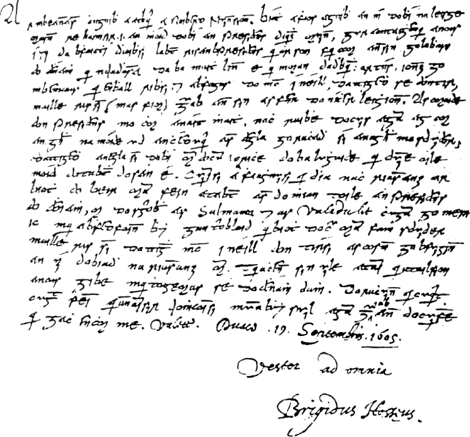 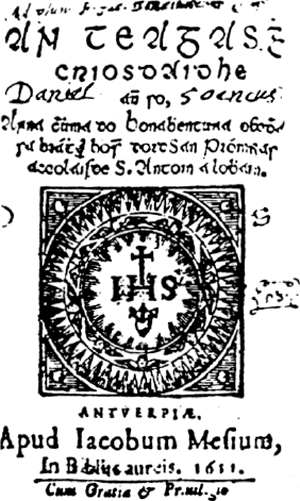 | |||||||||||||||||
[pagina 132]
| |||||||||||||||||
 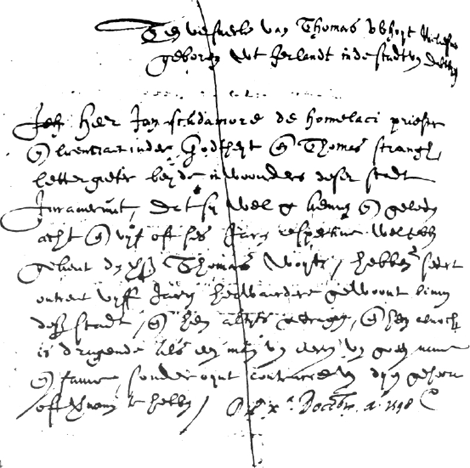 | |||||||||||||||||
[pagina 133]
| |||||||||||||||||
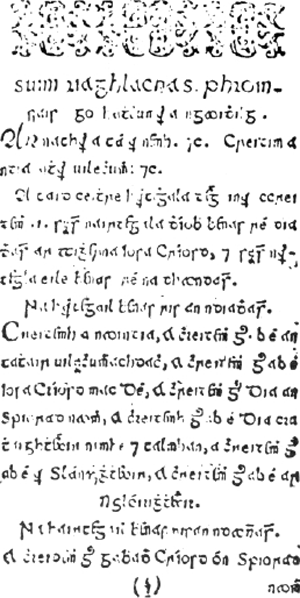 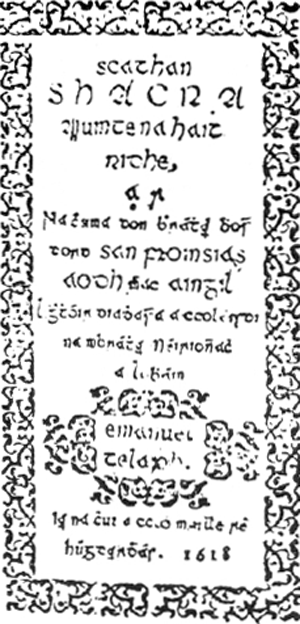  | |||||||||||||||||
[pagina 134]
| |||||||||||||||||
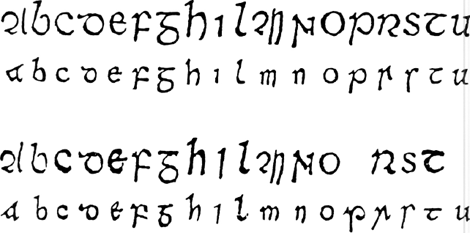 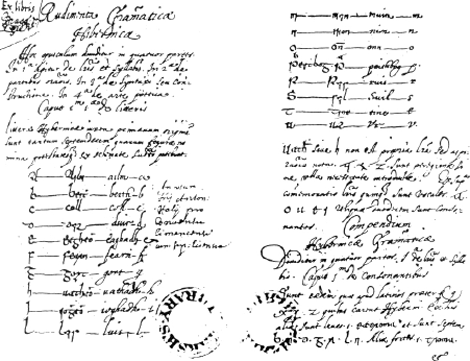 | |||||||||||||||||
[pagina 135]
| |||||||||||||||||
  | |||||||||||||||||
[pagina 136]
| |||||||||||||||||
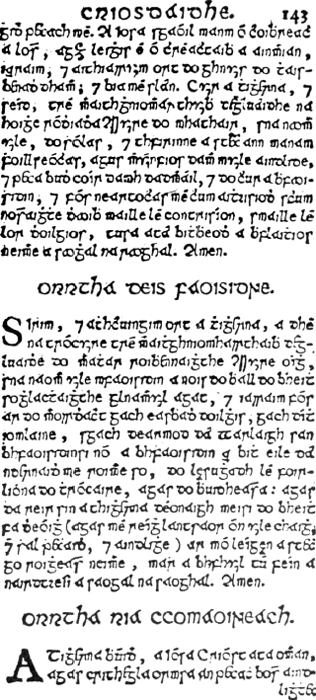 | |||||||||||||||||
[pagina 137]
| |||||||||||||||||
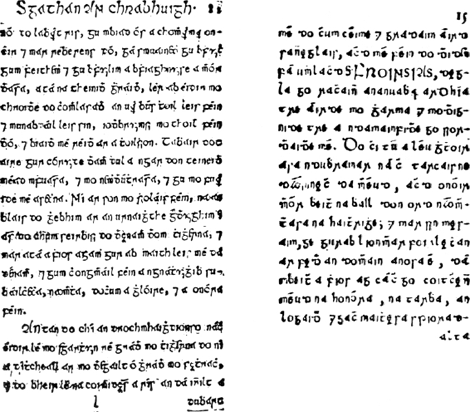 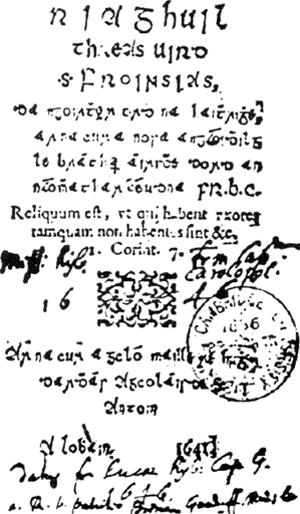  | |||||||||||||||||
[pagina 138]
| |||||||||||||||||
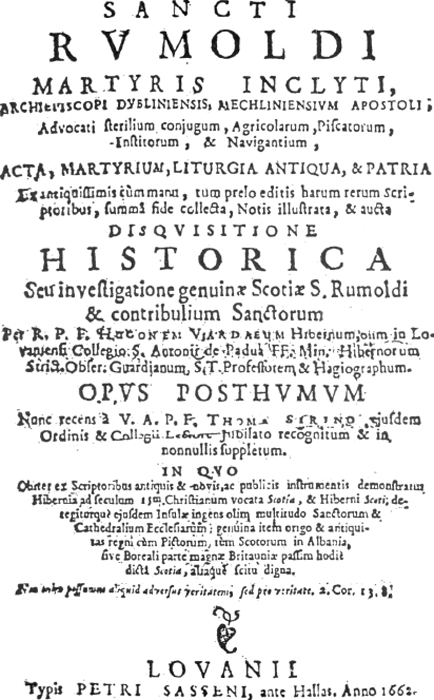 |
|

